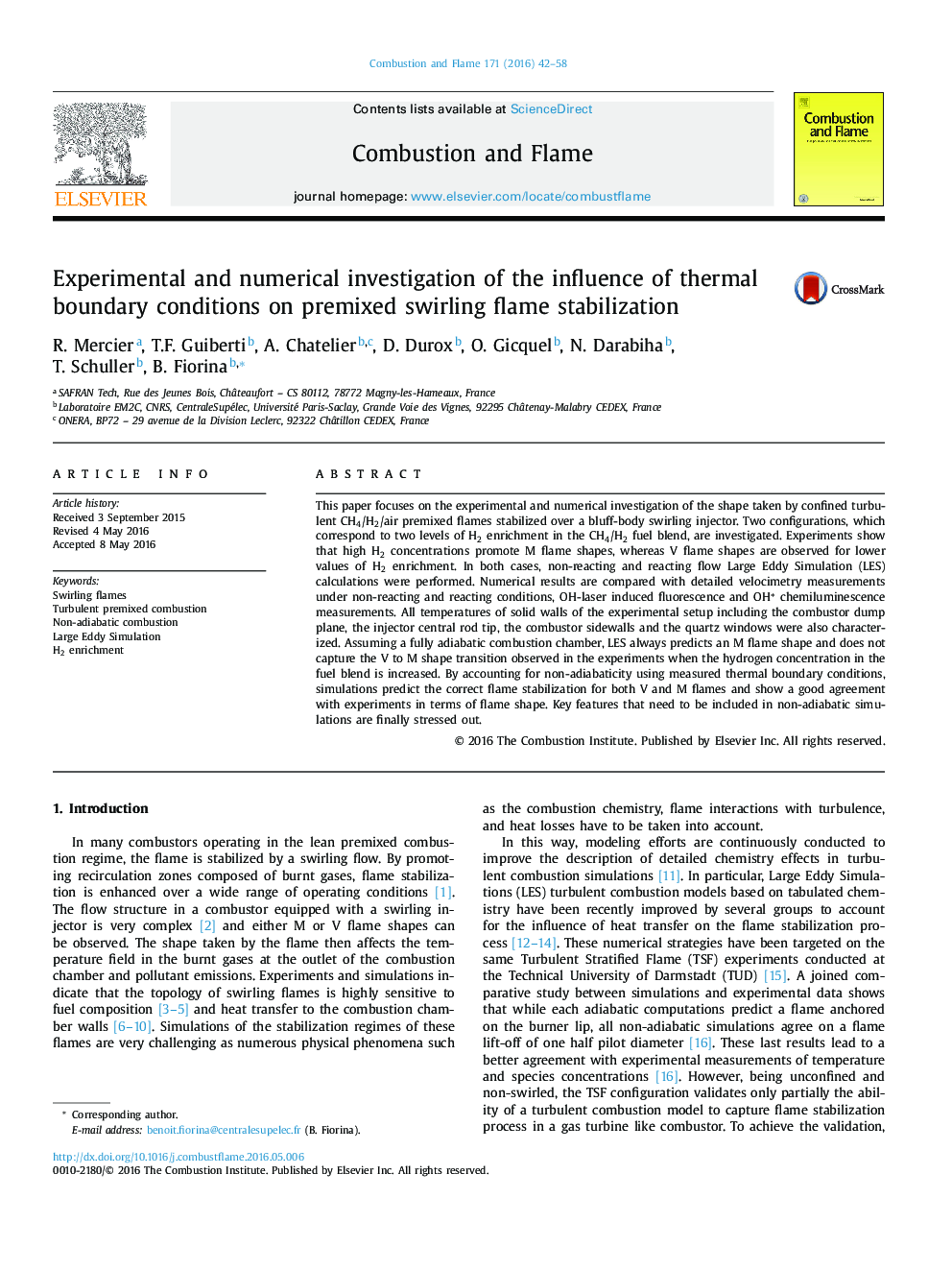| Article ID | Journal | Published Year | Pages | File Type |
|---|---|---|---|---|
| 168451 | Combustion and Flame | 2016 | 17 Pages |
This paper focuses on the experimental and numerical investigation of the shape taken by confined turbulent CH4/H2/air premixed flames stabilized over a bluff-body swirling injector. Two configurations, which correspond to two levels of H2 enrichment in the CH4/H2 fuel blend, are investigated. Experiments show that high H2 concentrations promote M flame shapes, whereas V flame shapes are observed for lower values of H2 enrichment. In both cases, non-reacting and reacting flow Large Eddy Simulation (LES) calculations were performed. Numerical results are compared with detailed velocimetry measurements under non-reacting and reacting conditions, OH-laser induced fluorescence and OH* chemiluminescence measurements. All temperatures of solid walls of the experimental setup including the combustor dump plane, the injector central rod tip, the combustor sidewalls and the quartz windows were also characterized. Assuming a fully adiabatic combustion chamber, LES always predicts an M flame shape and does not capture the V to M shape transition observed in the experiments when the hydrogen concentration in the fuel blend is increased. By accounting for non-adiabaticity using measured thermal boundary conditions, simulations predict the correct flame stabilization for both V and M flames and show a good agreement with experiments in terms of flame shape. Key features that need to be included in non-adiabatic simulations are finally stressed out.
